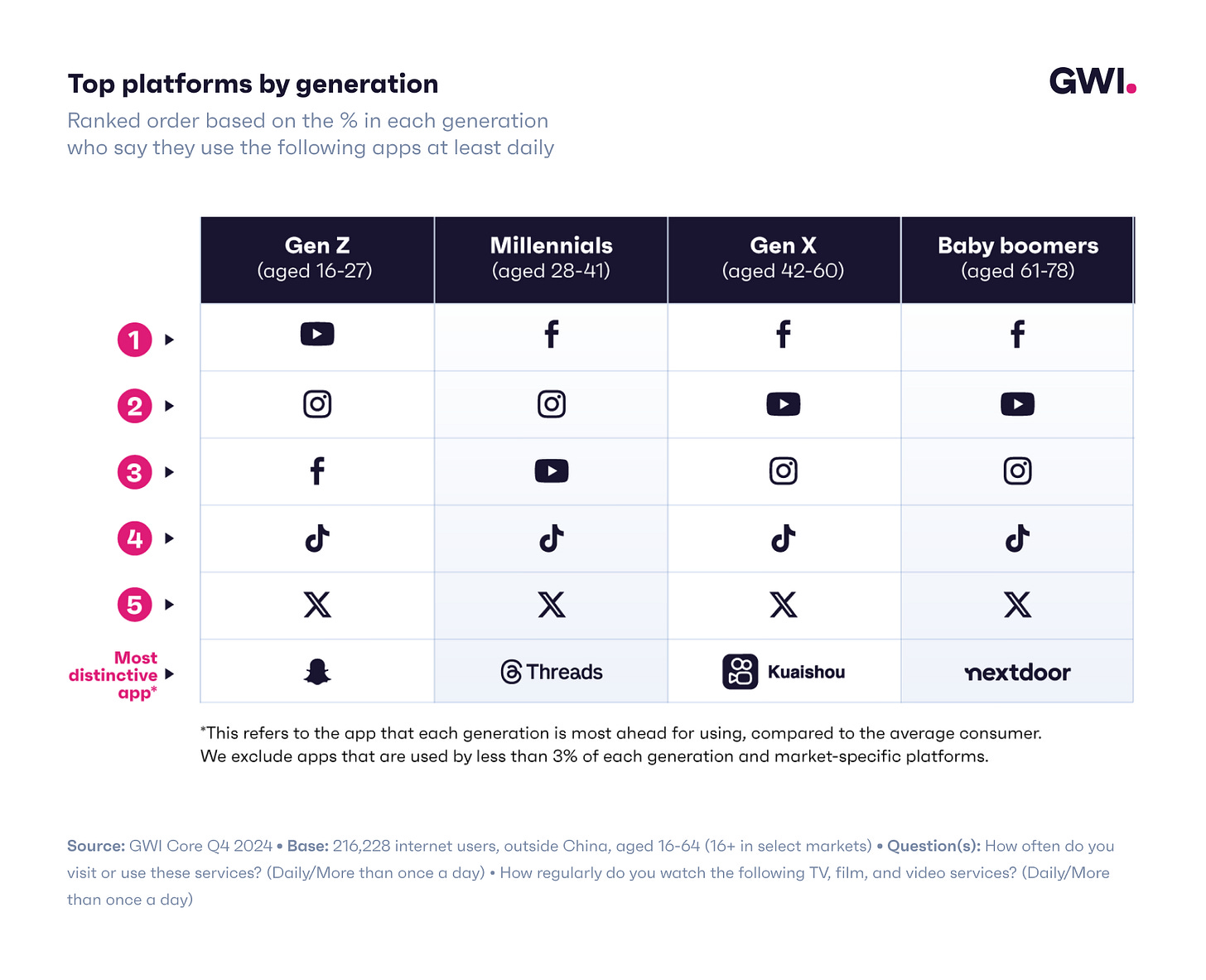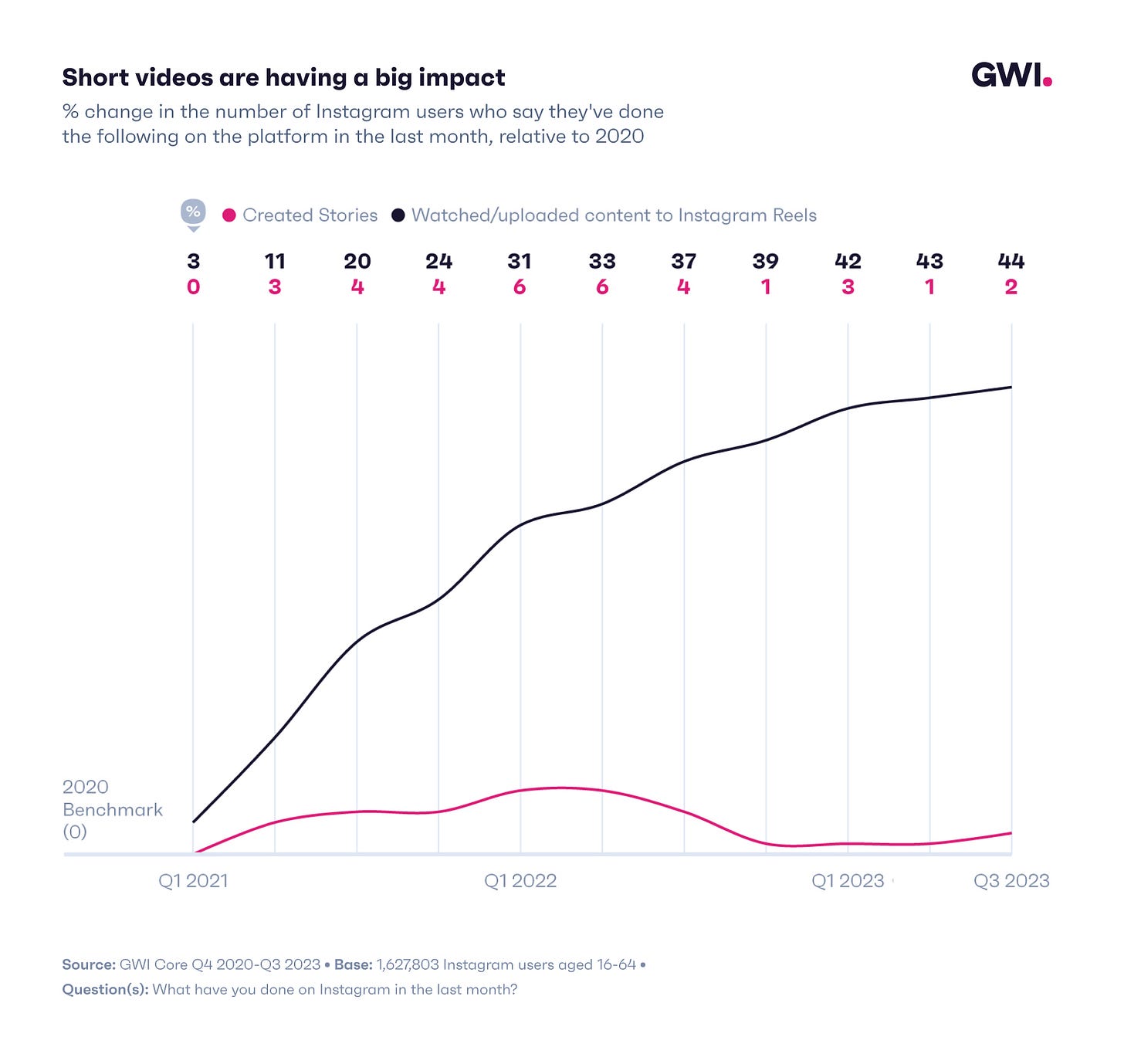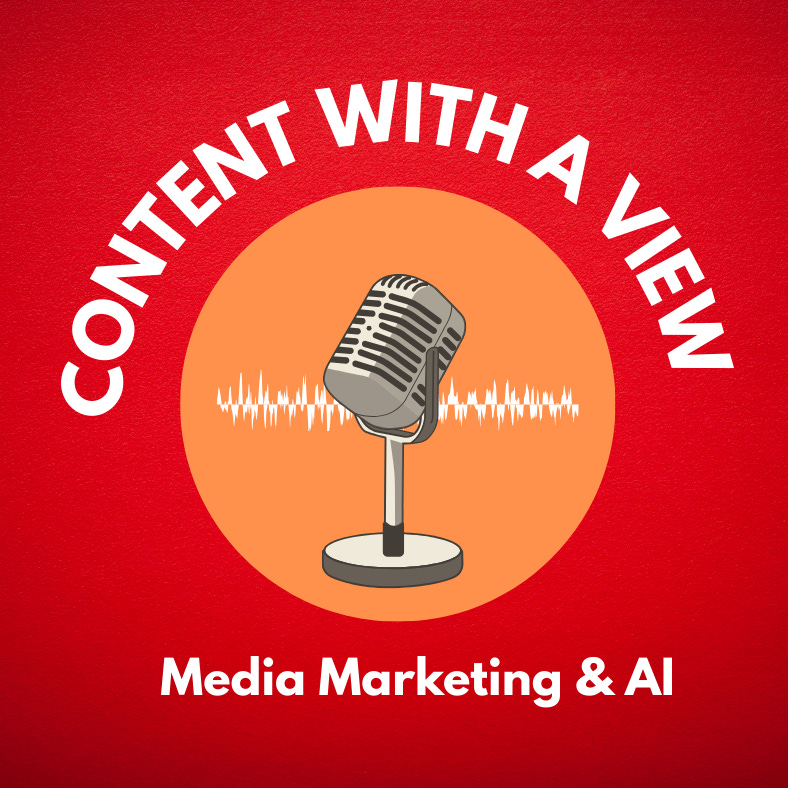SORA 2, SLOP VIDEOS AND THE ERA OF SYNTHETIC CREATORS
More and more often, what moves us emotionally isn’t created by another human being. It’s generated.
AI is turning the scroll into a dopamine factory. “More and more often, what moves us emotionally isn’t created by another human being. It’s generated. Dopamine becomes programmable. The user no longer looks for stories—they look for stimuli, repeatable and optimized. And AI can deliver them in real time, based on one’s own consumption patterns.”
The data that says it all
According to a scoping review published in Frontiers in Psychology, time spent in passive scrolling—watching content without interacting—is on average 2.3× higher than active behavior (commenting, posting, creating). In practical terms, this means that over 70% of our daily time on social platforms is spent silently consuming content, just scrolling. This trend is also confirmed by Pew Research (2023): most adult users engage with social media passively, without producing content.
And yet, something is changing.
According to the Financial Times, average time spent on social media in Europe peaked in 2022: since then, a slight but significant decline has been observed, especially in mature markets—except the U.S., where some growth persists. Social platforms are turning into an entertainment medium, with usage increasingly reflecting that shift. Age matters: YouTube ranks first for Gen Z, Facebook for Gen X and Boomers—which is quite incredible considering YouTube is often older than many of its users today. Synthetic, high-velocity content (TikTok) is everywhere, yet awareness is growing that social media is more a commercial tool than a relational one.
Scrolling as an emotional gesture
Scrolling is no longer mere distraction: it’s a daily micro-dose. We don’t read, we don’t interact, we don’t produce: we’re—often unconsciously—asking to feel something. Nostalgia, joy, amazement, tenderness. And the feed obliges. But increasingly, what moves us isn’t made by a human creator. It’s generated.
Video entertainment consumption has always relied on an evolutionary chain: first TV, then streamers, then creators. Today, in a phase of radical disintermediation, even production is being automated: a bot can create, edit, and distribute content without actors, writers, or directors.
Sora2 and the birth of synthetic content
OpenAI has shown with Sora2 how it’s possible to create realistic, dynamic videos starting from text prompts. The so-called slop videos—short, nonsensical, surreal, hyper-emotional clips—are becoming a new language. With Sora2 (or similar tools), anyone can produce a constant stream of emotional content with no technical skills, 24/7. Not TikTok as we know it—but TikTok 2.0, without creators.
The market of “predictable emotions”
A new market emerges: emotions on demand. Dopamine becomes programmable. The user no longer seeks stories—they seek stimuli, repeatable and optimized. And AI can deliver them in real time, based on your consumption patterns.
A laugh? 50 nonsense clips.
A tender moment? Talking kittens generated by neural networks.
A melancholy vibe? Nighttime skylines in VHS style.
Welcome to the dopamine factory. It’s also a perfect business: generated content, near-zero production costs, high monetizability. Every piece of content feeds a feed. Every feed produces data. Every data point can be sold. The dream of every board—and the nightmare of every inattentive user.
Human creators vs. synthetic generators
For Gen X or Millennials, a video still needs a sense of “real”: a face, an intention, a mistake. But Gen Z and Alpha—raised inside feeds—are already forming a new, more synthetic cultural taste. Awareness exists, but acceptance biases differ: the most accessible content beats the most sophisticated. The grammar and context shift: today it’s legitimate to place Star Wars and “Skibidi Toilet” side by side—and choose the latter. Not out of superficiality, but because it’s shareable, formatted, short, and algorithm-friendly. It’s a Copernican shift. It disrupts the very idea of quality—and those working in media should handle it before it’s too late.
A new business model
The emotion factory has a crystal-clear business model:
Access to AI is monetized → freemium tools, pro tiers, membership models
Ads and data monetize distribution → every generated content becomes traffic, every traffic becomes revenue
The platform no longer needs to “cultivate” creators: it turns them into customers—and can replace them when needed.
The real war is for time
Some say the streaming war is over. Perhaps it’s just changing shape.
OpenAI, Runway, Pika, ElevenLabs: they’re not challenging Netflix. They’re challenging the only non-replicable resource: human time.
An endless race to produce faster, distribute deeper, measure more precisely. And while bots generate content on a continuous loop, you—the human—are left with a single choice: where to place your gaze. And for how long.
The real battle isn’t between pieces of content. It’s between bots and attention.
Follow Content with a View for weekly content and a podcast:
Sources
1. Camerini, A. L., Albanesi, E., et al. (2021). The Associations of Active and Passive Social Media Use With Well-being: A Critical Scoping Review. Frontiers in Psychology.
https://doi.org/10.3389/fpsyg.2021.633768
2. Pew Research Center (2023). Most social media use is passive.
https://www.pewresearch.org/internet/2023/11/15/social-media-habits-and-behaviors
3. Financial Times (2024). Social media usage peaked in 2022 as users seek more focused digital experiences. https://www.ft.com/content/a0724dd9-0346-4df3-80f5-d6572c93a863
4. GWI Core Q4 2024. The social media remix & Top platforms by generation. www.gwi.com






